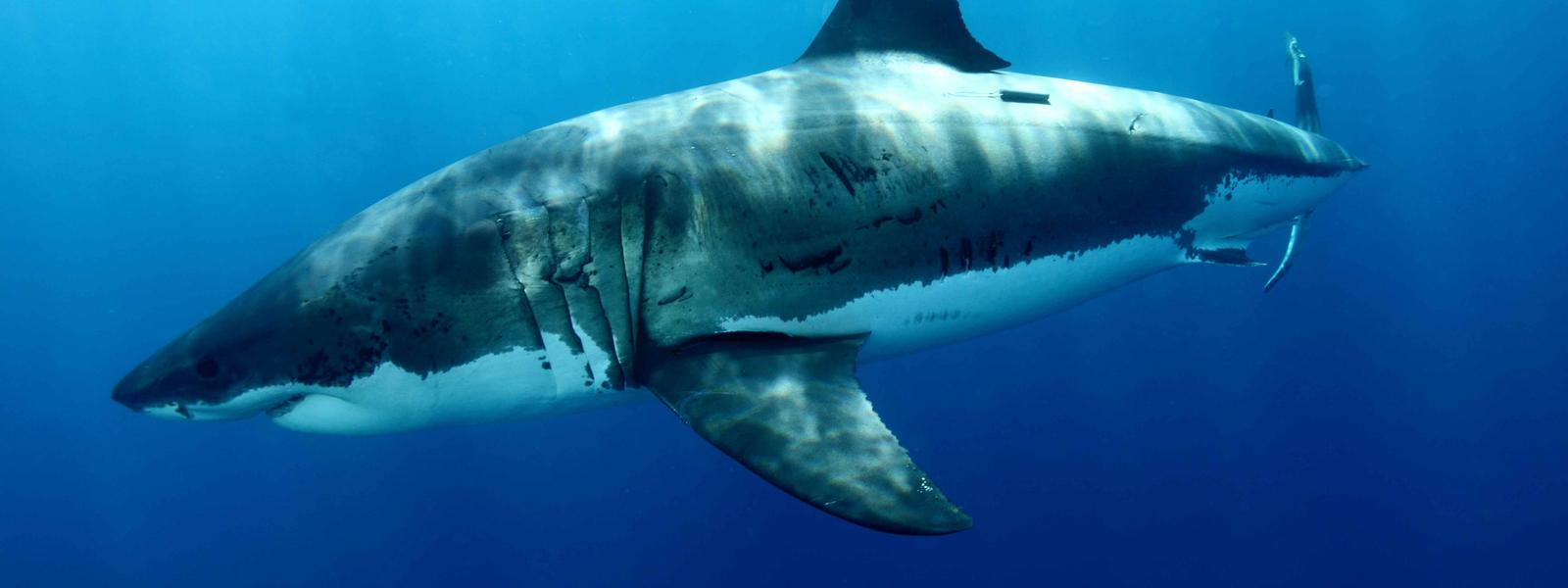The Great White Shark (Carcharodon Carcharius) is undoubtedly one of the most well known sharks. In our minds, it is the single most deadly killer there is in the ocean. Swimming in deep water is an open invitation to be eaten...
Not really. There are several more dangerous animals present in our oceans such as the box jellyfish or irukandji. Part of the fear of sharks comes from a feeling that we are not in control the moment we enter the water, stemming from the fact that we evolved to live on land, and land is where we are most at home. Film makers have tapped into this fear with movies like Jaws, Sharknado and The Reef along with the recent (Great White) Shark attack on Mick Fanning. But while the film makers are making lots of money, they are presenting an unreal interpretation of sharks.
 |
| http://www.worldwildlife.org/species/great-white-shark |
As seen above, the top of the body is a dark grey, while the bottom is a white colour. This is effective camouflage in the ocean, where prey looking down will be unlikely to see it, as it blends into the darker water below them. Any prey looking up underneath the shark will see a white colour, just what they would expect to see, camouflaging it with the light above.
Great Whites feed on many different prey items. They are known to attack:
- Squid
- Whales (Mostly as carrion)
- Seals
- Sea lions
- And more.
They live in temperate waters all over the world, and are particularly tolerant to colder waters due to the fact that they produce heat with a muscle that runs from behind the head to partway along their body, meaning that they are a few degrees warmer than the surrounding water. But this does mean that they require more energy than most sharks.
Great White Sharks are incredibly intelligent and uses problem solving to find the most effective ways of hunting. Great White Sharks in South Africa have started to jump out of the water underneath sea lions, effectively stunning the more mobile prey.
 |
| http://www.animalfactguide.com/animal-facts/great-white-shark/ |
 |
| http://www.grindtv.com/wildlife/seals-balancing-act-enables-it-to-escape-great-white-sharks-jaws/#cUmsAJYsYaAwijx1.97 |
This seal appears to be balancing on the Great White's jaws. But, it is likely that the Great White got the unfortunate seal in the end.

Chomp
ReplyDeleteChomp
ReplyDeleteChomp
ReplyDeleteChomp
ReplyDelete